Hunstanton is a links which begs to be played. One sits in the house and wonders how many golfers have started their round in sandy agony. Yet, these thoughts don't in the least discourage us; we all want to see a fair and true blow sail cleanly over the threatening sleepered bunker. There have been many changes to the original Willie Fernie designs of 1891 and 1895.
1. Perhaps the one change which leaves a tinge of regret is the loss of the 1st tee. The opener used to play from the Wash side of the house over the current 18th green and the large sleepered bunker. Previously the bunker was more open in nature, I don't know when it was sleepered. My guess is that the work was done in the mid to late 40s perhaps in preparation for the 1946 Ladies British Amateur or the 1951 English Amateur.
The old first tee was in an area which is now behind the practice bunker on the Wash side of the house. This photo just behind the current 18th green may be where the tee was first moved.
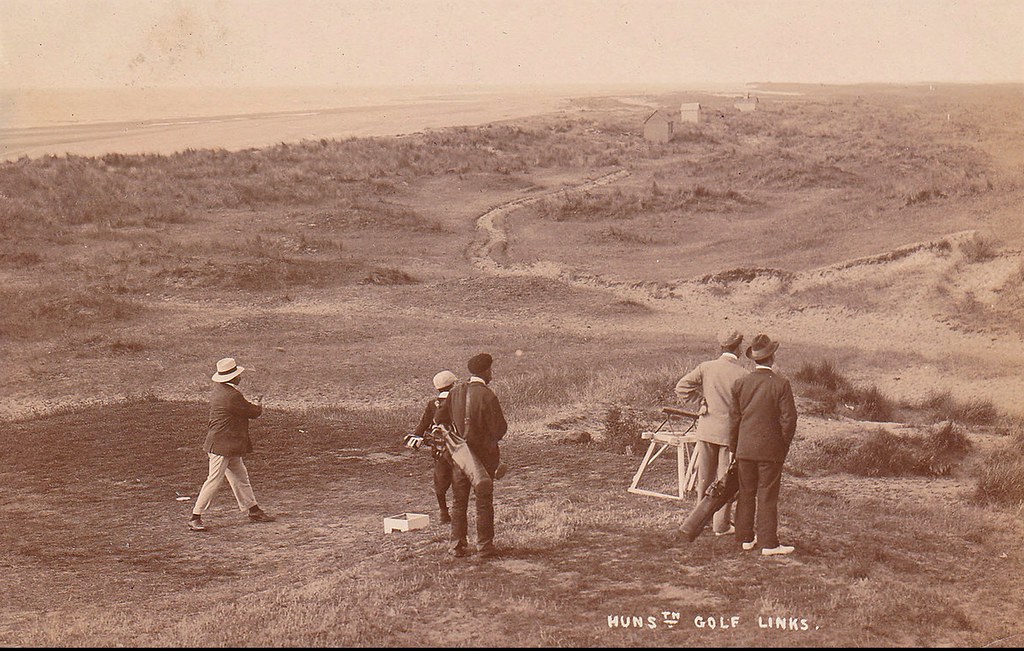
I believe this artwork shows where the tee was eventually moved and remains.
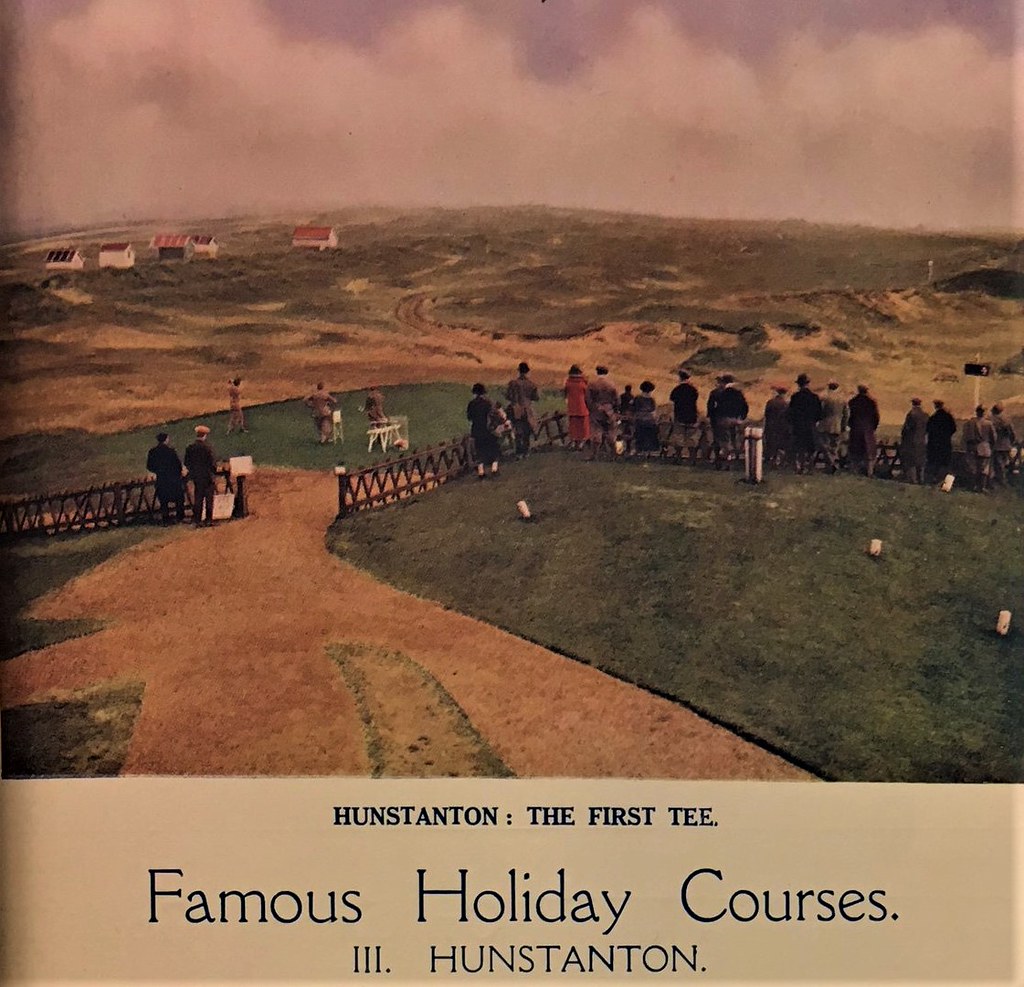
2. A completely new 18th hole was built on the Wash side of the links which now finishes much closer to the house.
3. The old 18th green area became what is now roughly where the current putting green is located.

The 18th during the 1928 Women's British Open.

4. Much of the old 18th fairway is now a practice ground.

5. The current 17th follows its old routing to a new green cut into the dune ridge. The old green was a bit further up on the dune ridge.
6. The second tee is moved left of the 1st green on high ground.
The net effect of the changes is a cross-over section of the routing was eliminated. Previously there was a walk over the old second hole to reach the 18th tee.
However, the addition of the stern finishers was probably an adequate exchange!
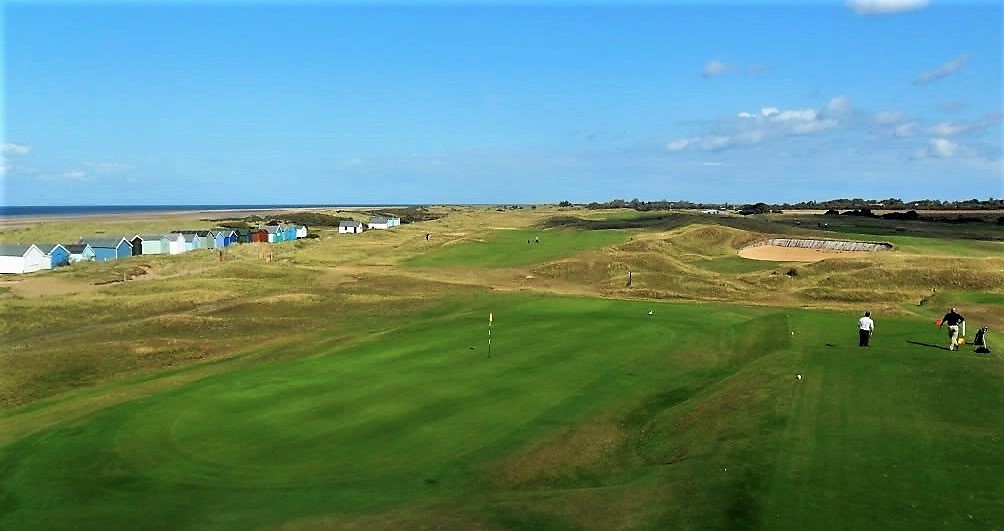
For some reason the opening holes aren't thought that highly of. I for one think #1 is perfect; in the right conditions a driveable par 4 with some trouble in the guise of OOB down the right lurking for the aggressive play. #2 is very good as well. The opening to the green too requires arrow - straight accuracy.
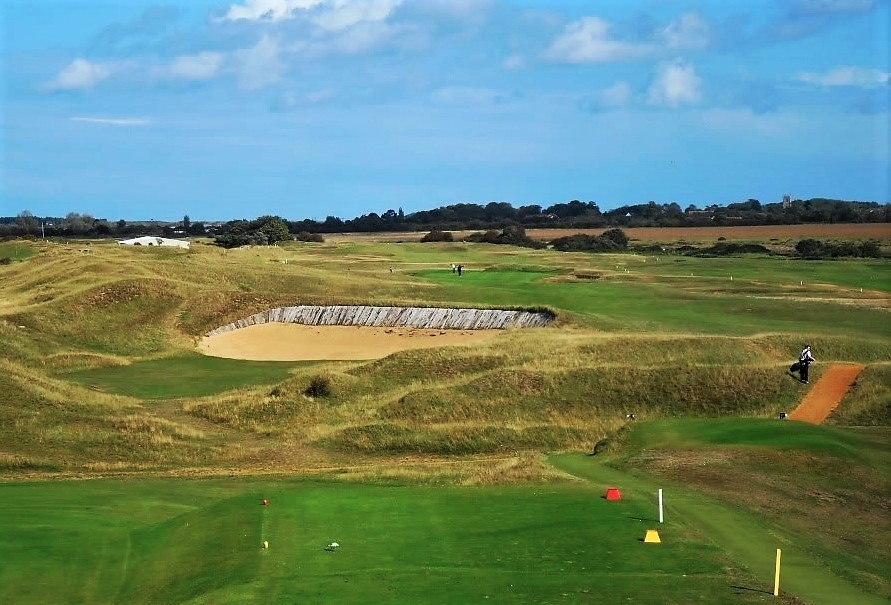
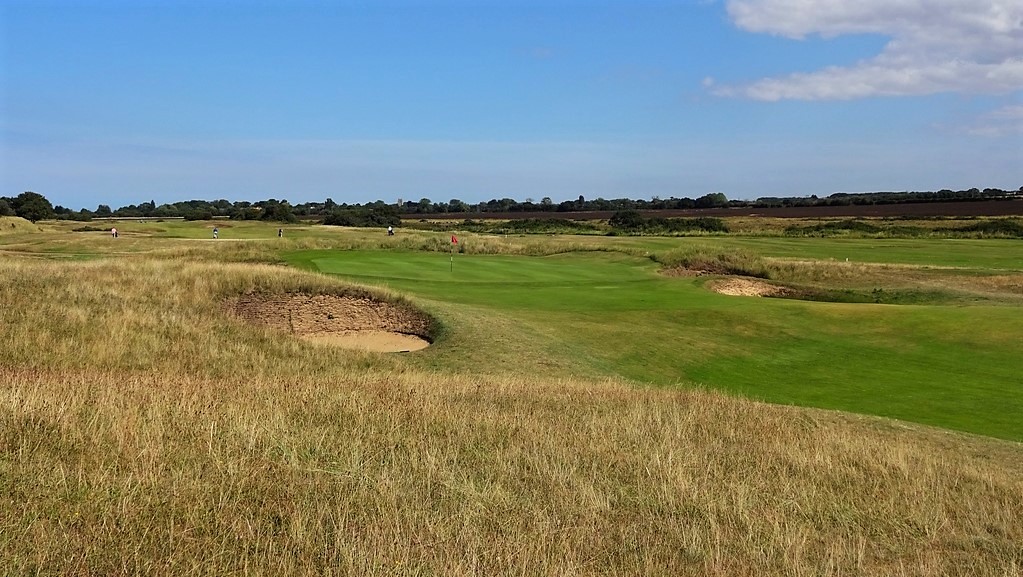
We can see the championship mantra of squeezing fairways with bunkers. However, despite the front nine playing down the prevailing wind, making the par 5 second quite reachable, trouble for the blind approach is probably more than most want to bargain for.
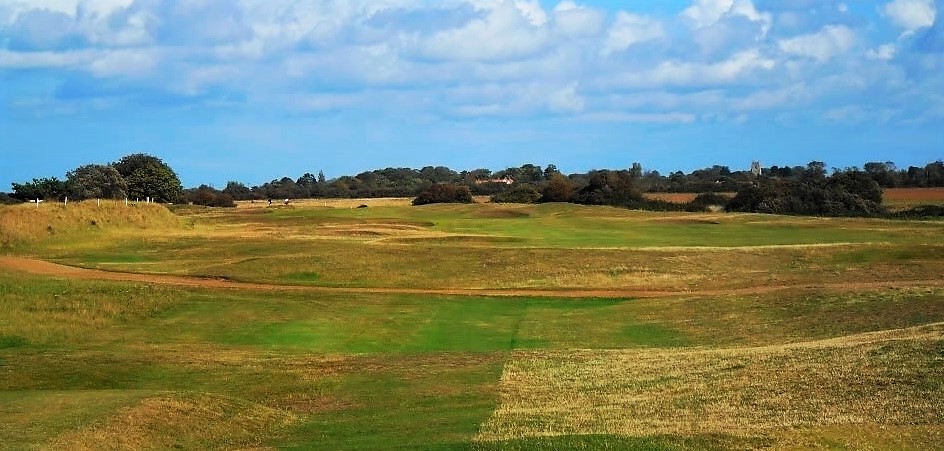
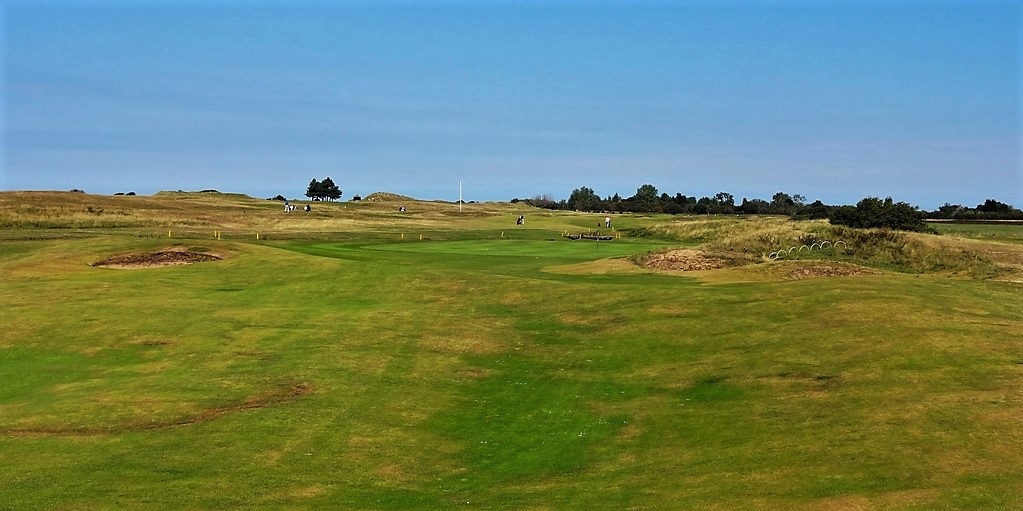
If the opening two holes leave plenty of room for conservative golf to earn pars, the dogleg right third increases the difficulty considerably. The safer left side creates the possibility of tangling with ever-present OOB down the right.
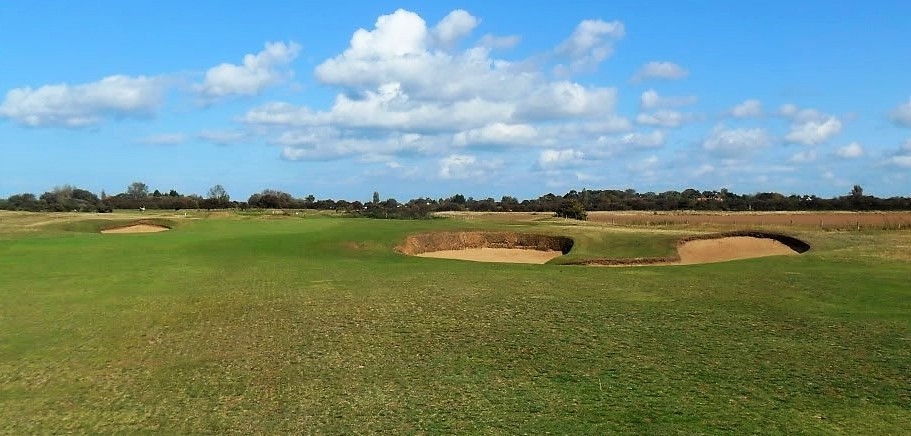
The heavily bunkered short 4th turns back toward the house and just as at Brancaster, it virtually shares a green with #14. #5 makes an about face and plays over meadowy terrain which merely pretends to be links. This hole doesn't sit well with me and I have to wonder what evolutionary changes took place. The good golf continues on the 299 yard 6th. The volcano green is Hunstanton's first show stopper.
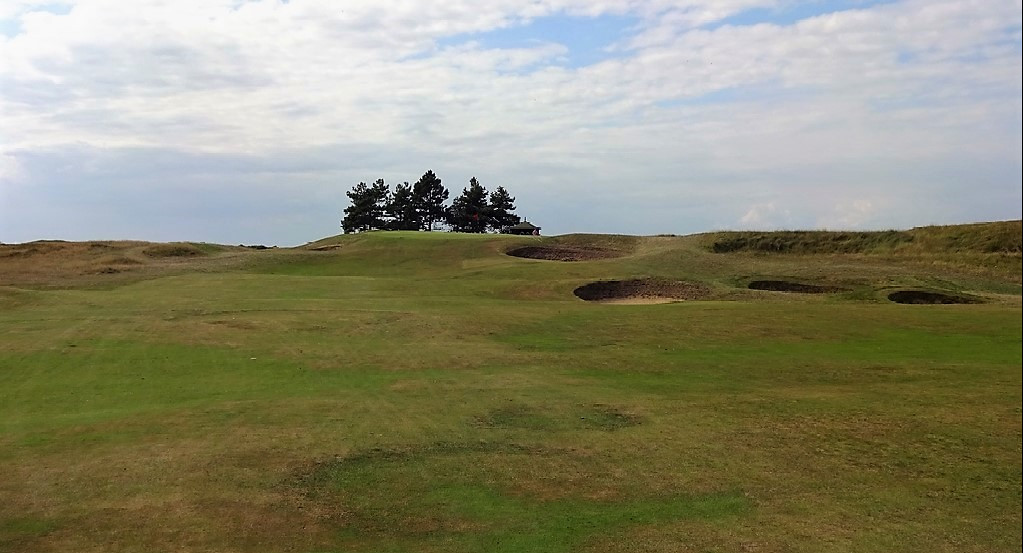
Prior to changes (I think in the 1930s) the 6th used to dogleg right with a green in the area which the 7th plays over. The photo looks back toward the house from the dune separating the current 7th & 9th.

One gets the impression that a gap was carved through the dune fronting the 7th. In any case, this is a lovely short hole which doesn't play much differently than Brancaster's 4th...though it is far and away more attractive.
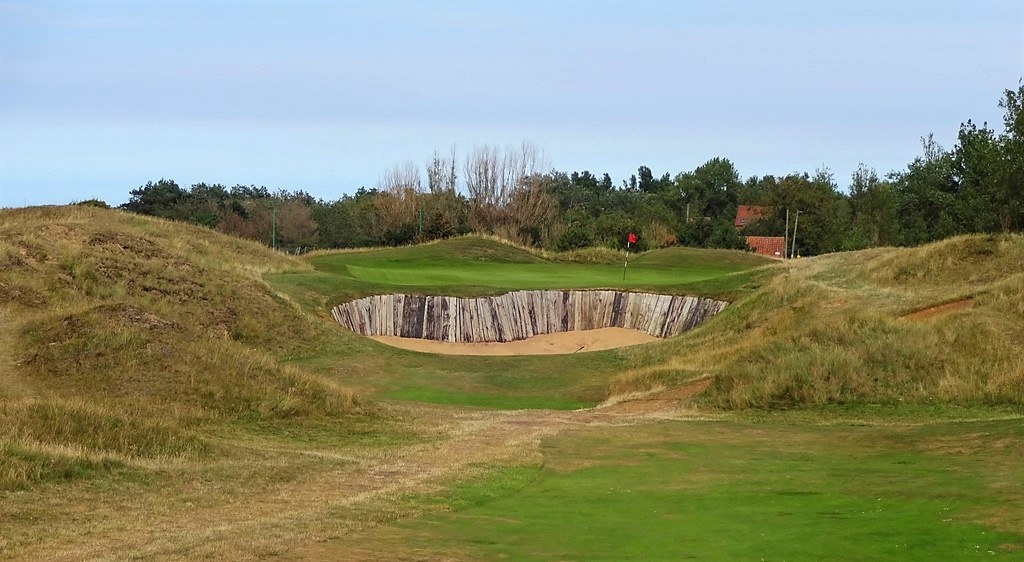
Big hitters have a huge advantage on the three-shot eighth. The hole is a tale of two halves. Its a messy looking hole from the tee with all the OOB and hazard stakes planted about like young saplings, but once over the double ditch and the access path between the beach and the hamlet of Holme, we enter a world of tranquility. Just when the course is starting to kick into links gear things get stalled by the 9th. Not a bad hole by any means, but back to back par 5s rarely works. Essentially, the problem with #9 is it is too narrow. This is a lingering problem on a small handful of holes coming home. I am not sure why as there is loads of space closer to the sea. That said, each hole runs in the oppsite direction so there is the possibility of catching the 9th on an easy off day


The origins of 9 through 11 are unclear. They may be quite old holes built by James Sherlock in 1925, not long after Braid left "a most destructive trail of bunkers behind him; wonderfully cunningly devised they are..." They may also be of the newer 1951 vintage when 17 & 18 were dramatically altered. In any case, we are most fortunate that the 10th is among Hunstanton's 18. The hole heads toward Brancaster to the east and uses a drainage ditch exceedingly well. The green too is quite interesting as it is angled in such a way as to make the position on the dangerous left side, near the ditch, most advantageous.
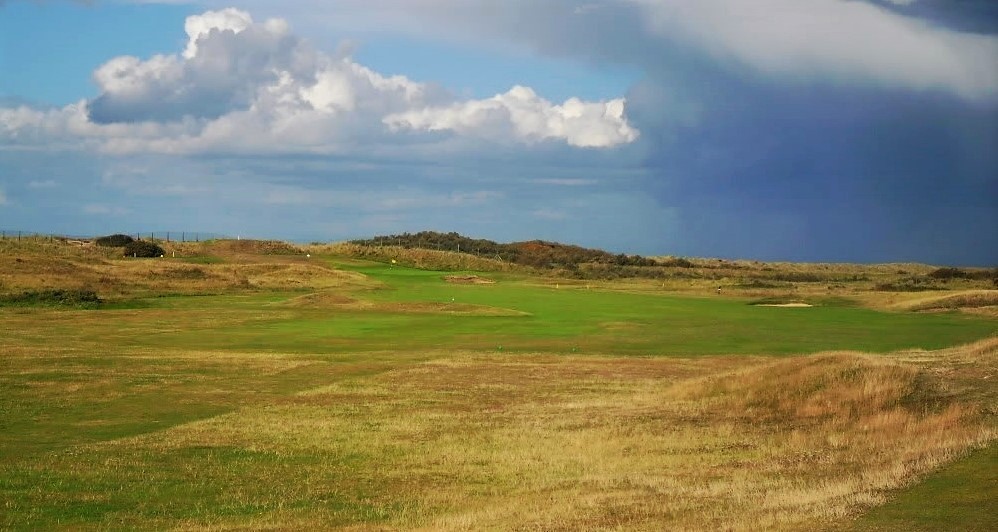
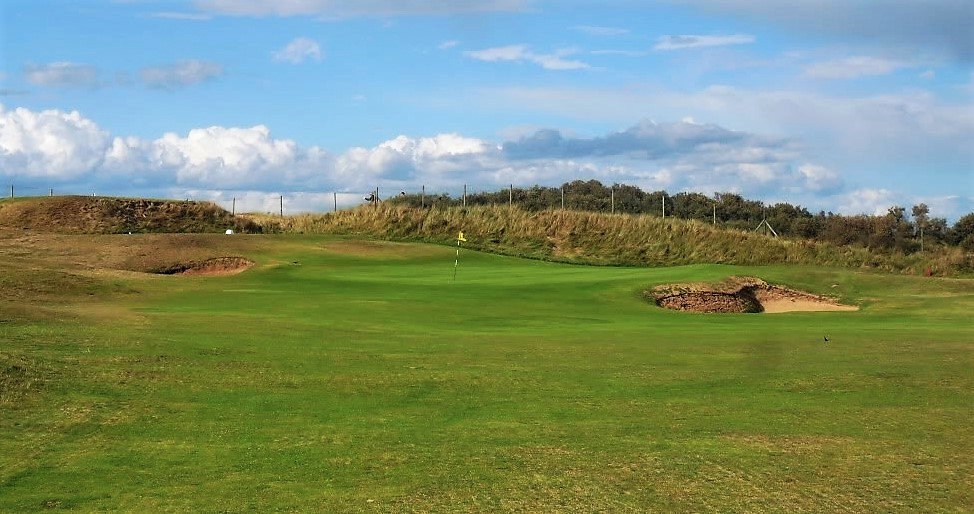
The double dogleg effect (FOXY!) created by an offset tee and the green partially tucked behind a dune is to be admired, but #11 is a bit too narrow. God help the golfer caught in a cross wind at Hunstanton!
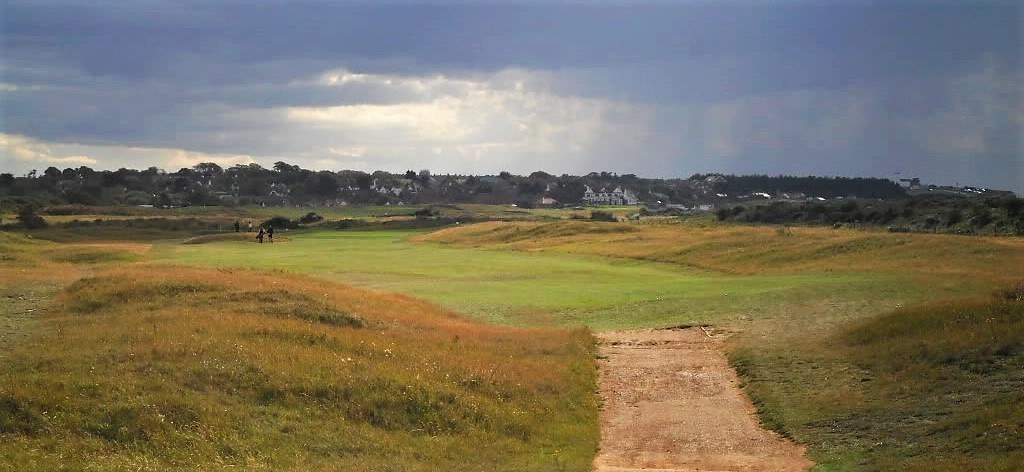
#12 is a bold, blind par 4 played against the grain of an out n' back routing. A cracking hole, for my money #13 is as good as anything at Brancaster. The drive is very similar to Rye's 16th, playing blindly over a ridge at an angle. I can imagine that on days when the wind is ferocious that reaching the top of the dune would be an impossible dream. Below is P Dickinson's sketch of the hole.

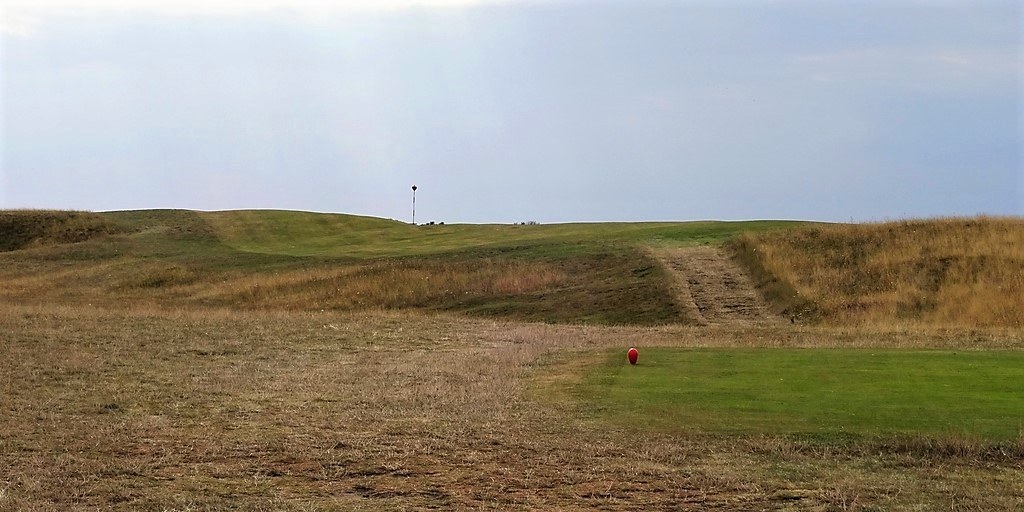
Once in the fairway it is apparent that to earn a view of the green one must be very accurate in length and direction as a drive hit too far right will tumble to a lower fairway leaving a blind second over broken ground. This is like many holes which once required Herculean efforts to gain the prime position, advanced equipment technology now makes it routine for handicap players to hit the ball so far that trouble is the reward. Below is a photo from halfway down the back of the ridge.
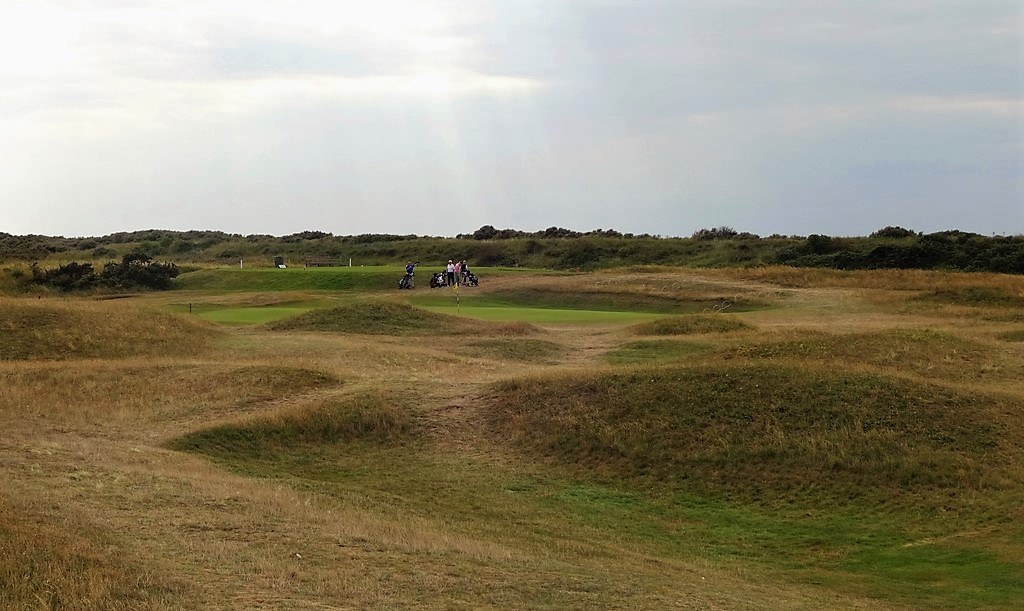
What a hole! The green generally moves from the front to back, but there is an interesting raised bowl in the centre.
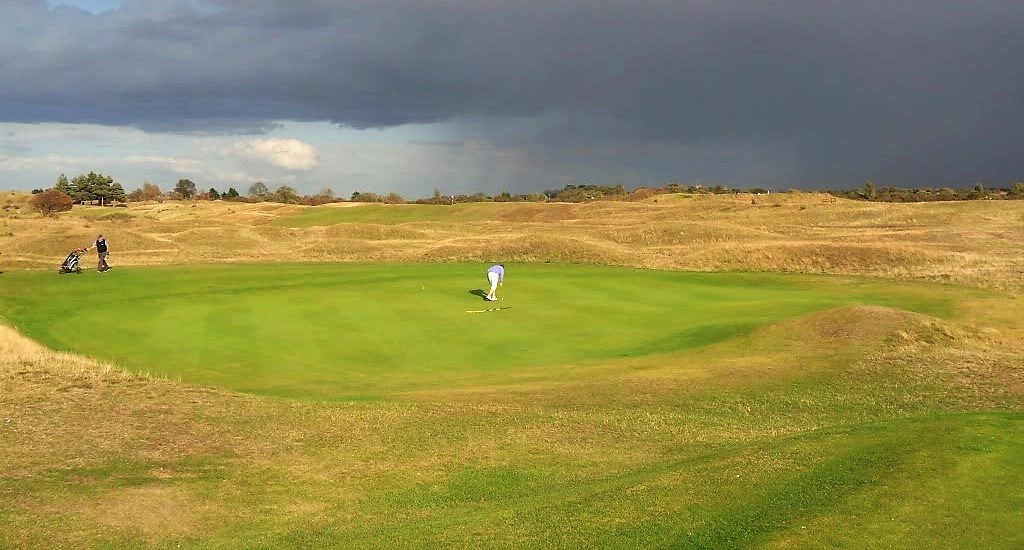
There are several very good two-shotters at Hunstanton, but few mention the quality of the par 3s. The 14th, a very similar hole to #12 in that the ridge is bi-sected, is an old fashioned blind par 3. The hole doesn't play as long as the listed 212 yards as once over the crest of the hill there is a keen turbo boost to the well defended green. The two hollows dug out of the side of the hill used to contain sand, perhaps they should be restored.
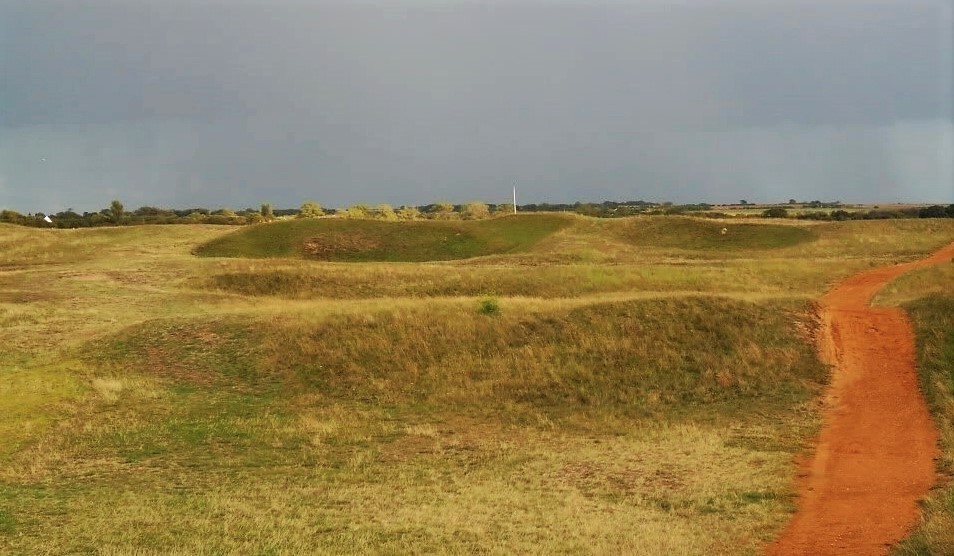
Leaking a tee shot right leaves a very unpromising finish to the hole. The 4th is to the left.
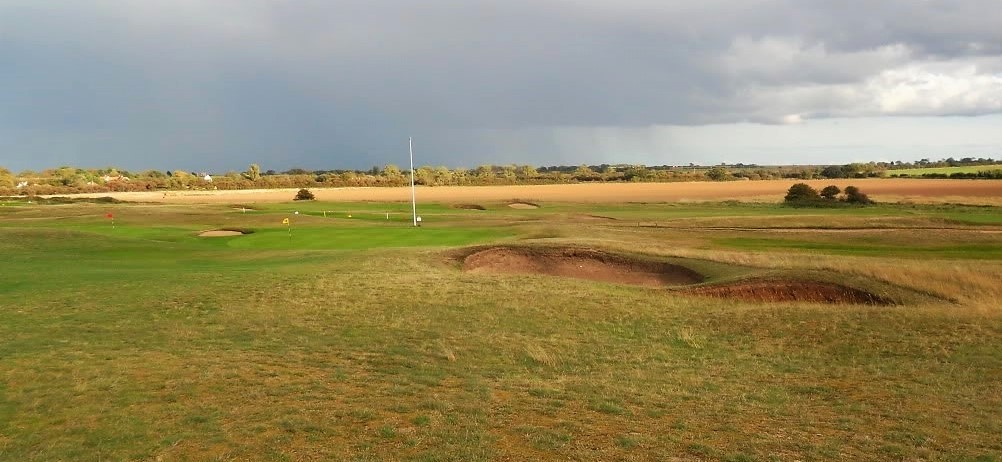
1950s?

Talk about low-tech, Mr Shackelford "oscillates the pole" behind 14 green

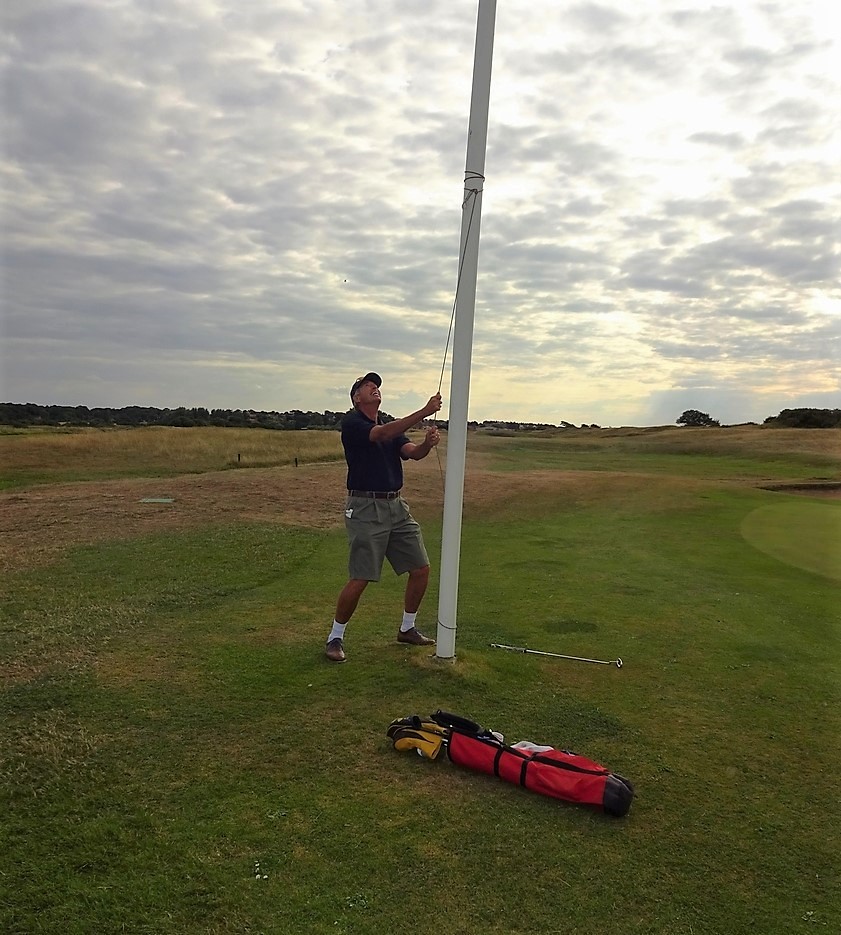
The three shot 15th is as tight as the 9th, but it does have an interesting short bunker and mildly raised green. We now cross back across the dune we played over on #14 for the final three holes and what a finish it is. Before going forward, we must take a moment to digest the information provided on a plaque at the base of the 16th tee.
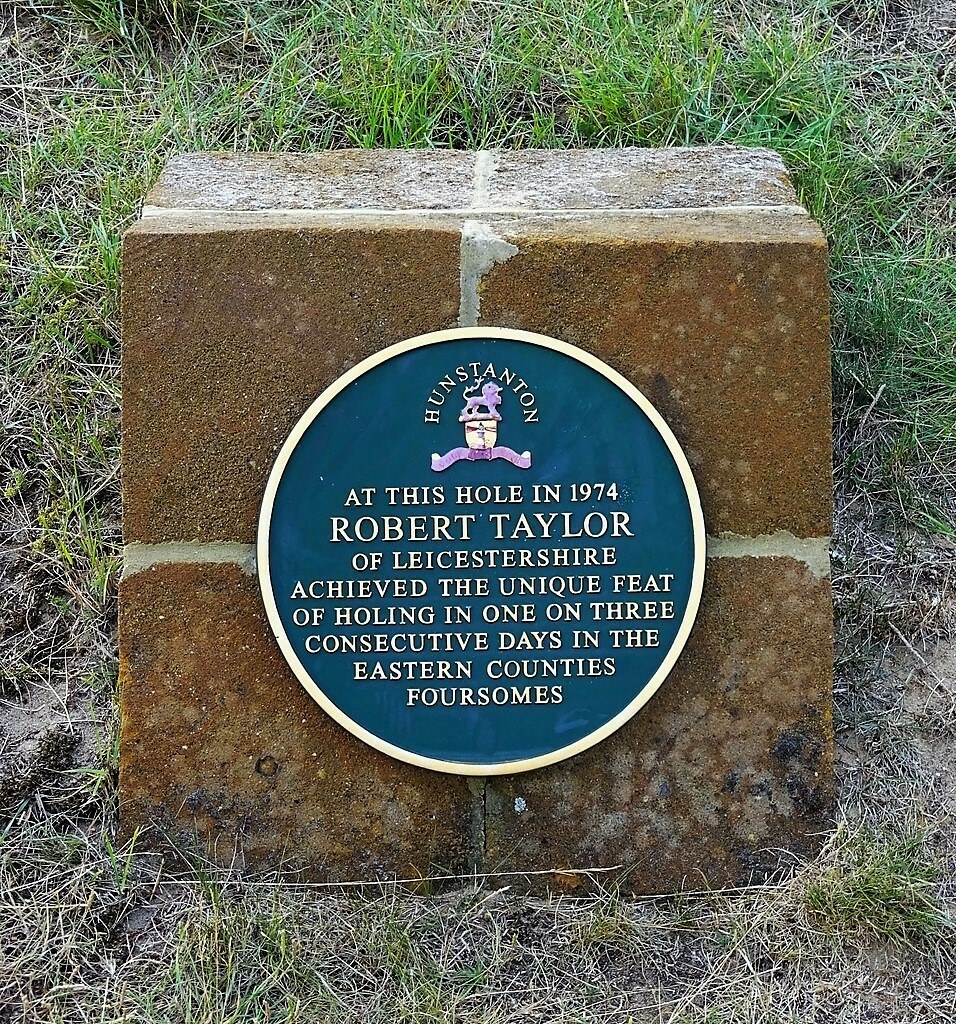
The 16th is very attractive downhill par 3 and as previously seen at 1 tee, 6 green, 7 tee and 8 green, the central dune ridge is utilized strikingly well. In this photo it is easy to see the pin resting in the lee of a sharp rise to the back of the green.
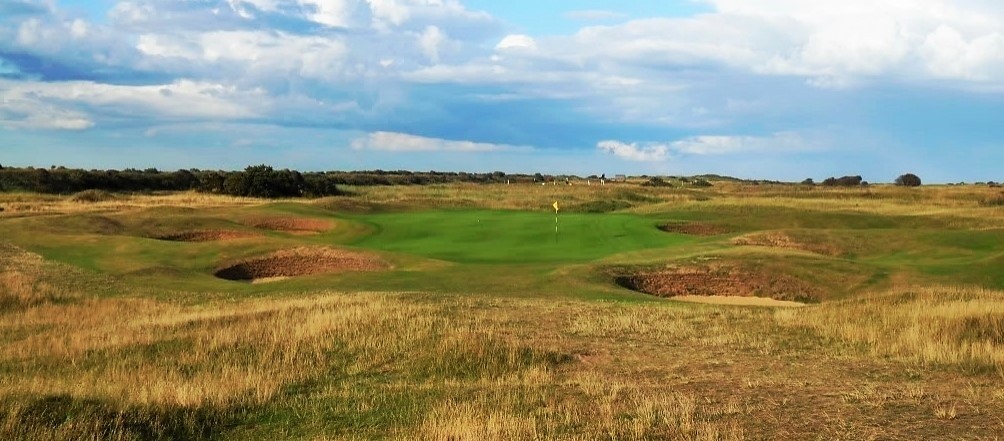
The 17th has so much character that this is one time I will forgive the transgression of being very narrow.
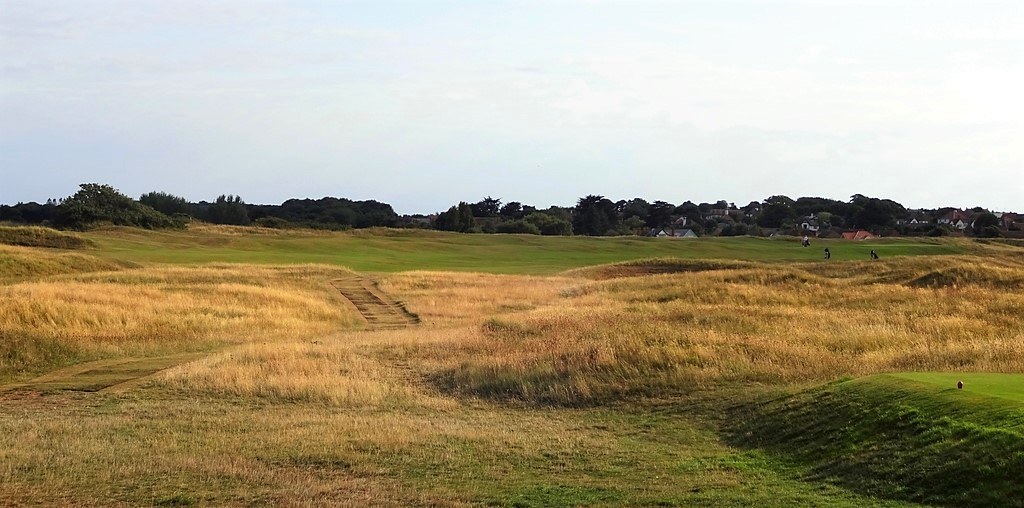
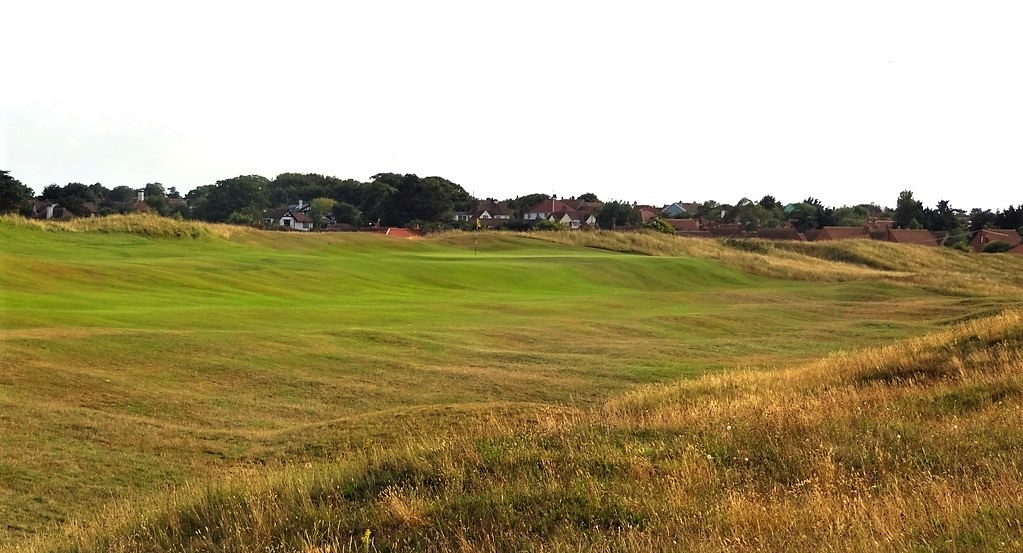
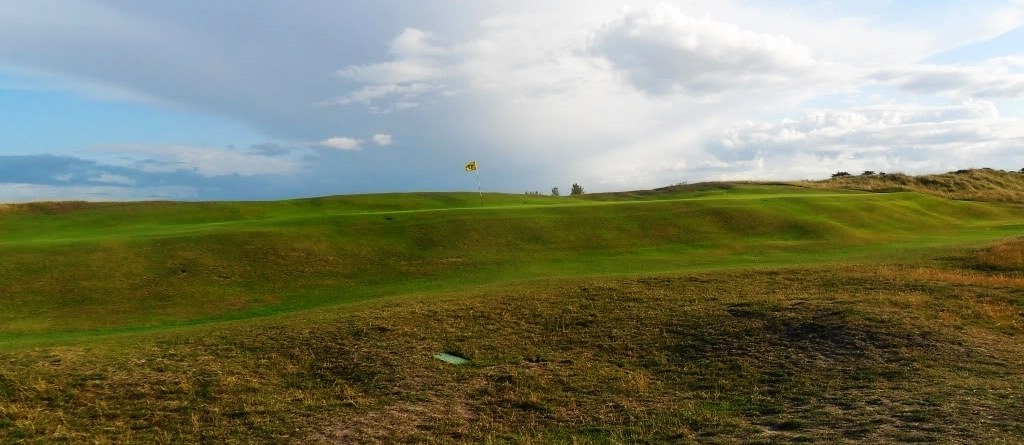
From a design perspective the 18th is probably better than #17 even if it doesn't have quite the oooompah. The second is played over broken low ground serving as a footpath to the beach which at one time I think was a huge bunker. For any that believe it doesn't matter if the 18th finishes in front of the house make a trip to Hunstanton. Golfers gather immediately behind the green clutching pints of ale eager to see their mates stumble home. There are few better arrangements than Hunstanton's 18th green, first tee, putting green and pro shop lined up as if on parade for Colonel Clubhouse.
I hope you enjoyed the tour of Hunstanton as much as I enjoy playing the course. Even if the three-shotters are a bit wanting as a set, there are enough superb par 3s and 4s to keep the golfer happy and keen. The use of the best feature of the course, the centreline dune ridge, is outstanding. Anyone who thinks highly of Rye will surely enjoy Hunstanton for if there were ever two courses of the same ilk it is these two links.
The club has unquestionaby turned the corner with its long suffering conditioning issues for the course is now in top nick. I would certainly suggest that if anybody is in Norfolk to play Brancaster, they should most certainly also play Hunstanton; 1*. 2015
Part I - Brancaster:
www.golfclubatlas.com/forum/index.php/topic,49686.msg1125201.html#msg1125201Ciao